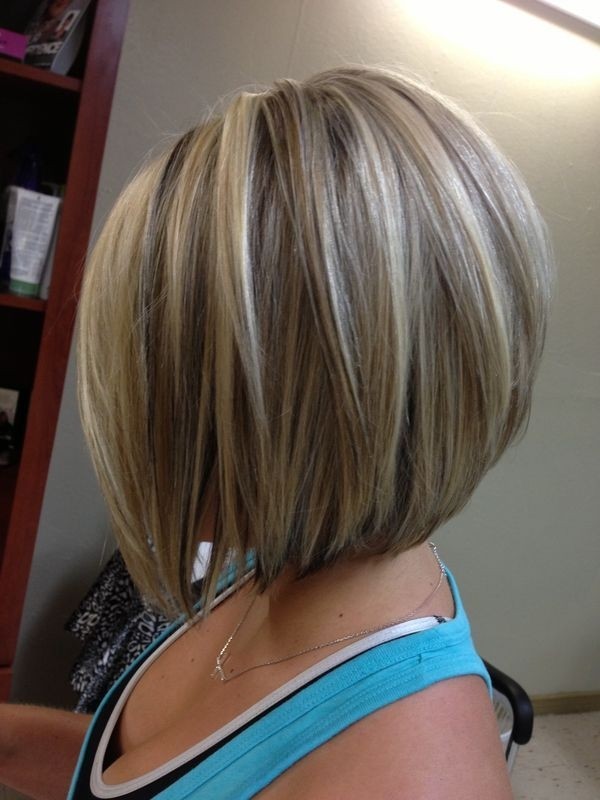 Bob Haircuts – Blogs Avenuehttp://www.blogsavenue.com/gallery/bob-haircuts/bob_haircut_1.jpg
Bob Haircuts – Blogs Avenuehttp://www.blogsavenue.com/gallery/bob-haircuts/bob_haircut_1.jpg
Bob Hairstyles Haircuts
A hairstyle, hairdo, or haircut identifies the styling of head of hair, on the real human head usually. Sometimes, this could also mean an editing of beard hair. The fashioning of hair can be considered an aspect of personal grooming, fashion, and cosmetics, although practical, cultural, and popular considerations also influence some hairstyles. The oldest known depiction of hair braiding dates back about 30,000 years. In historic civilizations, women's mane was often elaborately and carefully dressed up in special ways. In Imperial Rome, women used their hair in complicated styles. From enough time of the Roman Empire[citation needed] until the Middle Ages, nearly all women grew their mane as long as it could naturally increase. During the Roman Empire as well as in the 16th century in the western world, women started to wear their hair in extremely ornate styles. Inside the later half of the 15th century and on into the 16th century an extremely high hairline on the forehead was considered attractive. Through the 16th and 15th centuries, Western men wore their locks cropped no longer than shoulder-length. In the first 17th century male hairstyles grew longer, with waves or curls being considered desirable.
The male wig was pioneered by Ruler Louis XIII of France (1601-1643) in 1624. Periwigs or perukes for men were introduced in to the English-speaking world with other French styles in 1660. 17th-century wigs were lengthy and wavy late, but became shorter in the mid-18th century, where time they were white normally. Short hair for fashionable men was a product of the Neoclassical movement. In the early 19th century the man beard, and also moustaches and sideburns, made a strong reappearance. In the 16th to the 19th hundred years, European women's head of hair became more obvious while their head of hair coverings grew smaller. In the center of the 18th hundred years the pouf style developed. Through the First World Conflict, women around the world started to shift to shorter hairstyles that were much easier to manage. In the first 1950s women's hair was generally curled and worn in a number of styles and lengths. In the 1960s, many women commenced to wear their mane in a nutshell modern cuts including the pixie cut, within the 1970s, scalp tended to be much longer and looser. In both 1960s and 1970s many men and women wore their hair lengthy and straight. Within the 1980s, women pulled back their hair with scrunchies. During the 1980s, punk hairstyles were adopted by some individuals.
Throughout times, folks have worn their hair in a multitude of styles, determined by the fashions of the culture they are in largely. Hairstyles are markers and signifiers of social class, age, marital status, racial identification, political beliefs, and attitudes about gender.
In many ethnicities, often for religious reasons, women's mane is protected while in public areas, and in a few, such as Haredi Judaism or Western european Orthodox areas, women's head of hair is shaved or slice very brief, and protected with wigs.Only because the end of World War I have women begun to wear their wild hair short and in fairly natural styles.
Paleolithic
- The oldest known reproduction of wild hair braiding lies back about 30,000 years: the Venus of Willendorf, now known in academia as the girl of Willendorf, of a female figurine from the Paleolithic, predicted to get been made between about 28,000 and 25,000 BCE.The Venus of Brassempouy matters about 25,000 yrs . old and indisputably shows hairstyling.
Bronze Age
- In Bronze Years razors were known and used by some men, but not on a regular basis since the procedure was rather annoying and required resharpening of the tool which reduced its strength.
Ancient history
- In traditional civilizations, women's head of hair was often elaborately and carefully dressed in special ways. Women coloured their wild hair, curled it, and pinned it up (ponytail) in a variety of ways. They set their hair in waves and curls using wet clay, that they dried out in sunlight and combed out then, or else by utilizing a jelly made of quince seeds soaked in normal water, or styling tongs and curling irons of varied kinds.
Roman Empire and Middle Ages
- Between 27 BC and 102 AD, in Imperial Rome, women wore their mane in complicated styles: scores of curls at the top, or in rows of waves, drawn back to braids or ringlets. Eventually noblewomen's hairstyles grew so complex that they required daily attention from several slaves and a stylist to become maintained. The hair was lightened using lumber ash, unslaked lime and sodium bicarbonate, or darkened with copper filings, oak-apples or leeches marinated in wine beverages and vinegar. It was augmented by wigs, pads and hairpieces, and held set up by nets, pins, pomade and combs. Under the Byzantine Empire, noblewomen covered most of their hair with silk caps and pearl nets.
Best HAIRSTYLES For Short Hair Women
- It is very important to find the best short hairstyles for ladies since it takes on a huge part of your look. Having the right hairstyle can provide you with enjoyment and positive emotions. Find out which hairstyle is perfect for your character and personality. You should talk to your hairstylist before having a new haircut also. After all, changes are excellent and it can truly add positive outlook in your life also. Feel free to browse our assortment of short hairstyles for women and select the one that your like best.
long bob haircuts long bob hairstyles
 https://blogger.googleusercontent.com/img/b/R29vZ2xl/AVvXsEjiwBxfE2N665DQmK6SO7VguavyNVCYYYTGq0Y_7uaMLNkmWBTrhDUvSTZ6DCmf9EXI6lTqCHYiMTqVYIQ1icBJ_8f8JnWcRrVExqSO_0C3-K8O01ephbd3eRuni6TBE_YL36GokpkVD6A/s1600/Long_Bob_Hairstyle_5.jpg
https://blogger.googleusercontent.com/img/b/R29vZ2xl/AVvXsEjiwBxfE2N665DQmK6SO7VguavyNVCYYYTGq0Y_7uaMLNkmWBTrhDUvSTZ6DCmf9EXI6lTqCHYiMTqVYIQ1icBJ_8f8JnWcRrVExqSO_0C3-K8O01ephbd3eRuni6TBE_YL36GokpkVD6A/s1600/Long_Bob_Hairstyle_5.jpgBest Angled Bob Hairstyles 20122013 Pictures
 http://thebestfashionblog.com/wp-content/uploads/2012/03/Angled-Bob-Hairstyles-2012-2013-Pictures-5.jpg
http://thebestfashionblog.com/wp-content/uploads/2012/03/Angled-Bob-Hairstyles-2012-2013-Pictures-5.jpg30 Popular Stacked Aline Bob Hairstyles for Women Styles Weekly
 http://stylesweekly.com/wp-content/uploads/2014/12/Stacked-Bob-Hairstyles-Pictures.jpg
http://stylesweekly.com/wp-content/uploads/2014/12/Stacked-Bob-Hairstyles-Pictures.jpgMedium Length Bob Haircuts For SpringSummer 2014
 http://thebestfashionblog.com/wp-content/uploads/2014/01/Medium-Length-Bob-Haircuts-2014-5.jpg
http://thebestfashionblog.com/wp-content/uploads/2014/01/Medium-Length-Bob-Haircuts-2014-5.jpgOIP.M60ce5e2fc6b5a9decad3ff9c089fd5e7o1
39E7FA1D56F6D39F8D4B4F173CD1CE90FBEA250B5Chttp://www.blogsavenue.com/bob-haircuts/
Embed Our image to your website
ThumbnailImageEmbed Our image to a Forum
ThumbnailImage








.jpg)
.jpg)

